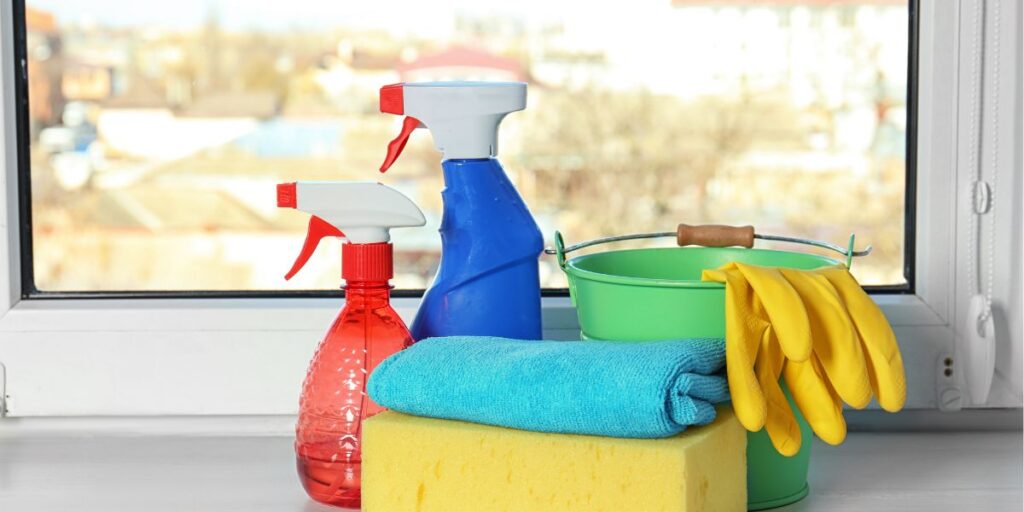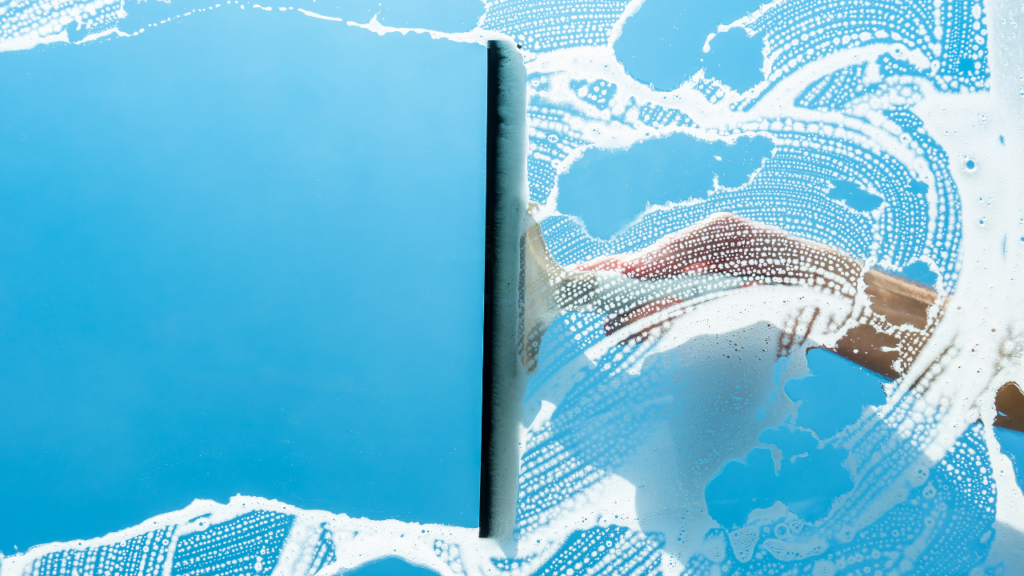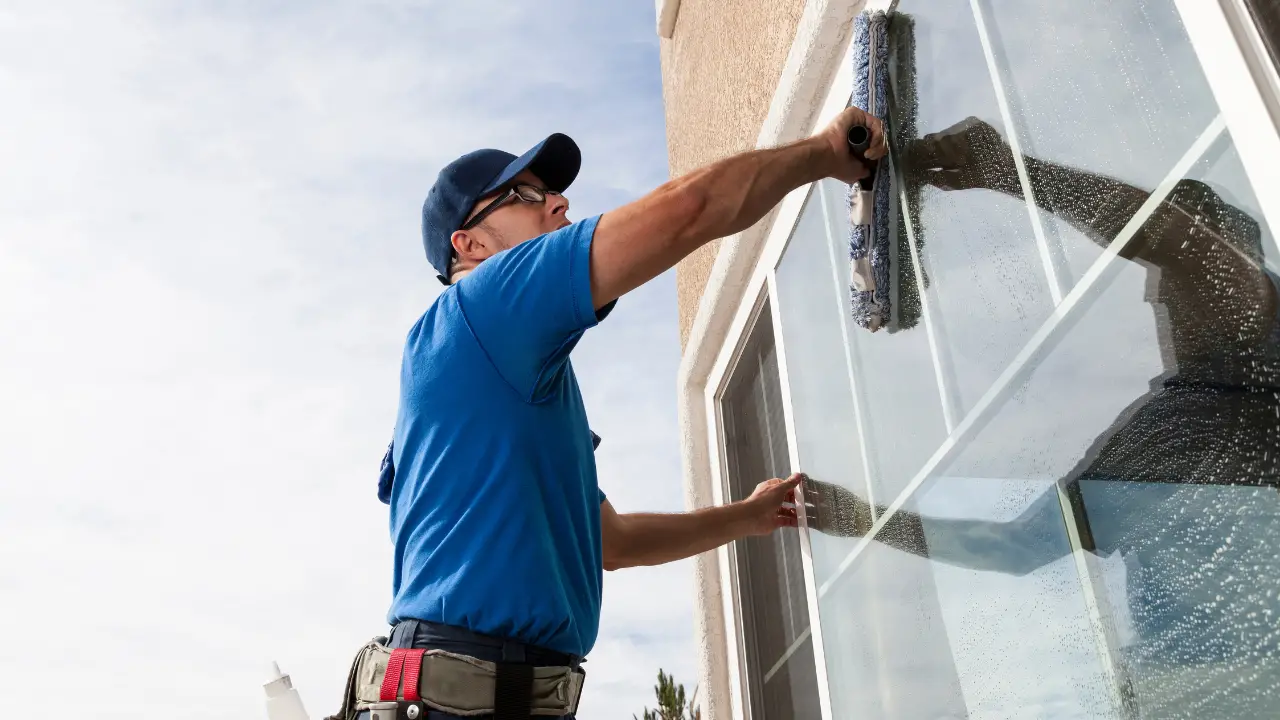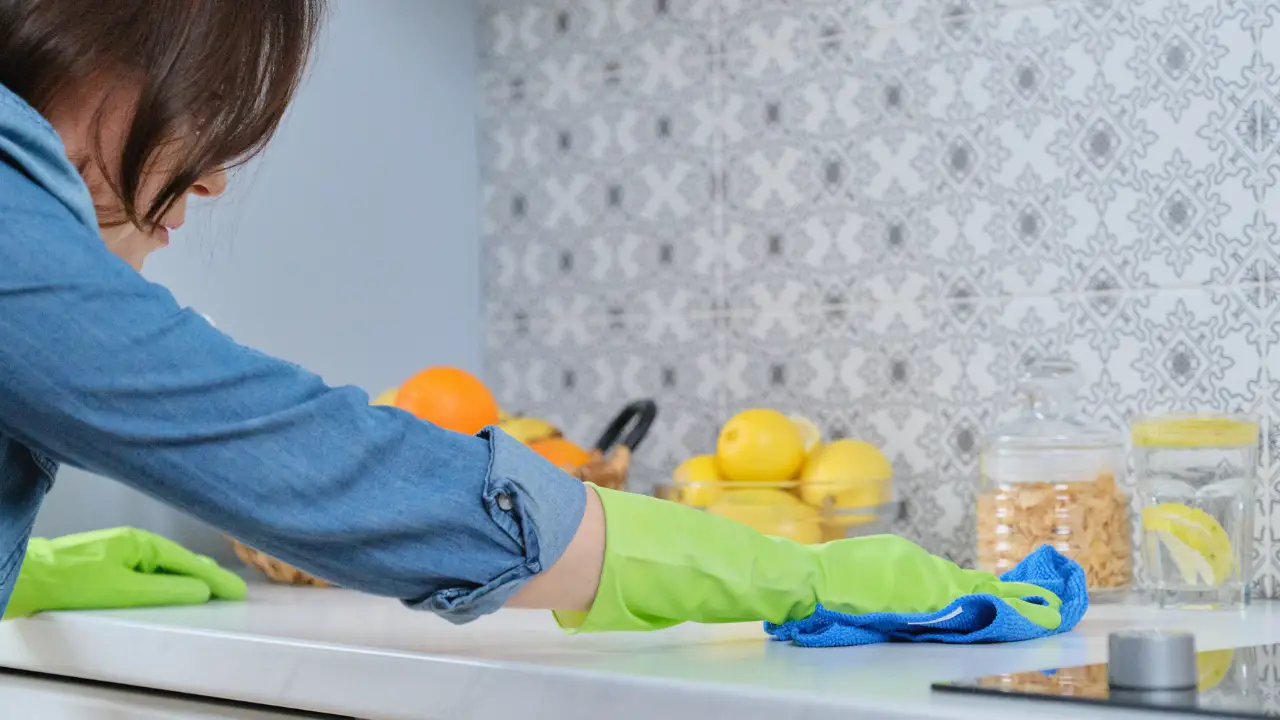Clean windows brighten up your home and provide a clear view of the outdoors. But cleaning windows can be daunting task, especially if you’re not sure where to start.
In this brief guide, we’ll provide a step-by-step guide for cleaning your windows, including recommendations for cleaning products and tools. We’ll also include tips for preventing streaks and maintaining the appearance of your windows.
Table of Contents
Step 1: Gather Your Supplies
Before you begin cleaning your windows, it’s important to gather all the supplies you’ll need. Here’s a list of recommended supplies:
- Window cleaner (commercial or homemade)
- Microfiber cloth or sponge
- Squeegee
- Bucket
- Water

Step 2: Prepare the Area
Before you start cleaning your windows, you’ll want to prep the area. Remove any items from the windowsill and clear the area around the window to avoid any accidental spills or messes. You may also want to place a towel or drop cloth under the window to catch any drips.
Step 3: Apply Window Cleaner
Apply the window cleaner to the window using a microfiber cloth or sponge. Be sure to cover the entire surface of the window, including the edges and corners.
Step 4: Use the Squeegee
Use the squeegee to remove the window cleaner from the window. Start at the top of the window and work your way down, using a back-and-forth motion. Be sure to wipe the squeegee blade with a clean cloth after each pass to prevent streaks.

Step 5: Repeat
If there are still streaks or spots on the window, repeat steps 3 and 4 until the window is clean.
Step 6: Clean the Window Frame and Sill
Use a damp cloth to clean the window frame and sill. Be sure to remove any dirt or grime that may have accumulated.
Step 7: Wipe Away Excess Water
Use a dry microfiber cloth or a paper towel to wipe away any excess water from the window and surrounding area.
Tips for Preventing Streaks
- Use a squeegee to remove excess water and prevent streaks.
- Avoid cleaning windows in direct sunlight, as the heat causes the cleaning solution to dry too quickly and leave streaks.
- Use a microfiber cloth or sponge to apply the cleaning solution, as paper towels and other materials can leave lint and streaks.
- Clean your windows on a cloudy day or in the morning or evening when the sun is not shining directly on the window.
Maintaining the Appearance of Your Windows
- Clean your windows regularly to prevent dirt and grime build up.
- Dust your windowsills and frames regularly to prevent dirt and debris from accumulating.
- Repair any cracks or damage to your windows to prevent moisture build up and damage.
FAQs
How often should I clean my windows?
Cleaning frequency depends on various factors like your location, environmental conditions, and personal preference. Generally, it’s recommended to clean windows at least twice a year, ideally in the spring and fall, to keep them looking their best.
What is the best window cleaner to use?
The best window cleaner depends on personal preference and the type of windows you have. Commercial window cleaners are readily available and effective. Alternatively, you can make a homemade solution using a mixture of equal parts water and vinegar.
Can I make a homemade window cleaner, and if so, how?
Yes, you can make a homemade window cleaner. Mix equal parts of white vinegar and water in a spray bottle. For a pleasant scent, you can add a few drops of essential oil. Shake the bottle well before use.
What type of cloth or sponge is best for cleaning windows?
Microfiber cloths are an excellent choice for cleaning windows as they are soft, lint-free, and effective in removing dirt and streaks. Avoid using paper towels, as they may leave lint and streaks on the glass.
How do I prevent streaks on my windows after cleaning?
To prevent streaks, use a squeegee to remove the cleaning solution from the window. Wipe the squeegee blade with a clean cloth after each pass to avoid transferring dirt back onto the glass.
Can you provide tips for cleaning windows in hard-to-reach areas?
For hard-to-reach areas, consider using an extension pole for your squeegee or invest in a window cleaning kit with specialized tools designed for high windows.
Is there a specific squeegee technique to avoid streaks?
Start at the top of the window and work your way down using a back-and-forth motion with the squeegee. Overlapping each stroke slightly can help prevent streaks.
Can I clean my windows on a sunny day, or is it better to wait for a cloudy day?
It’s best to avoid cleaning windows on a sunny day, as the heat can cause the cleaning solution to dry too quickly, leading to streaks. Choose a cloudy day or clean your windows in the morning or evening when the sun is not shining directly on them.
How do I clean windows with stubborn stains or grime?
For stubborn stains, you can use a mixture of water and mild dish soap. Apply the solution to the stain, let it sit for a few minutes, then gently scrub with a soft brush or sponge before rinsing.
What are the best practices for cleaning window frames and sills?
Use a damp cloth to clean the window frames and sills. Avoid using harsh chemicals that could damage the frames or any surrounding materials.
Should I be concerned about damaging my windows while cleaning?
With proper cleaning techniques and using appropriate materials, you shouldn’t worry about damaging your windows. Avoid using abrasive materials that could scratch the glass or frames.
Can I use any type of water for cleaning, or should I use distilled water?
You can use regular tap water for cleaning. However, if your tap water is hard and leaves mineral deposits, consider using distilled water for a streak-free finish.
What are the benefits of using microfiber cloths for window cleaning?
Microfiber cloths are highly absorbent and trap dirt and dust effectively. They are also soft and non-abrasive, making them ideal for cleaning glass surfaces without leaving streaks.
Is it necessary to hire a professional window cleaning service, or can I do it myself?
Window cleaning can be done as a DIY project, but hiring a professional service might be preferred if you have tall or difficult-to-reach windows or if you want a thorough and efficient job.
How do I clean windows on the upper floors of a multi-story building safely?
For cleaning windows on higher floors, it’s safest to hire a professional window cleaning service with the right equipment and expertise. If you choose to do it yourself, use proper safety gear and a secure ladder or an extension pole for squeegeeing.
What precautions should I take to avoid accidental spills or messes while cleaning?
Clear the area around the window, place a towel or drop cloth under the window to catch drips, and be careful with the cleaning solution to prevent accidental spills.
How can I prevent moisture build-up between double-pane or double-glazed windows?
Moisture between double-pane windows indicates a seal failure. Unfortunately, this issue can’t be fixed by cleaning alone. Contact a professional to inspect and repair or replace the affected window.
Conclusion
Cleaning your windows doesn’t have to be a difficult task. With the right supplies and technique, you can achieve clean, streak-free windows that brighten up your home and provide a clear view of the outdoors.




